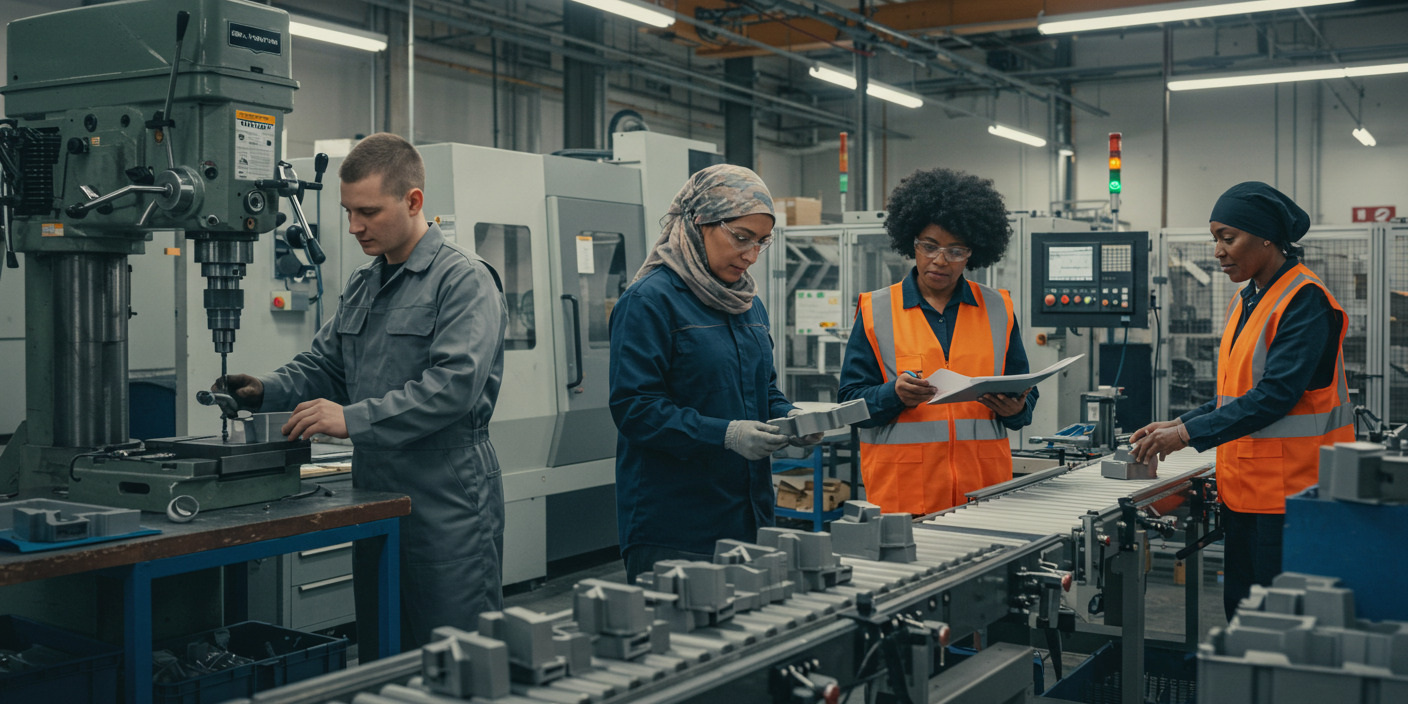
Manufacturing has always thrived on efficiency, precision, and repeatability. But now, something fundamental is shifting. With AI — especially generative AI — entering the picture, manufacturers are rethinking not just how they optimize processes, but how they design, maintain, and adapt in real time.
This isn’t theoretical anymore. We’re past the proof-of-concept stage. Companies across the globe are using AI to reduce waste, speed up product development, detect defects early, and make better decisions faster.
If you’re in manufacturing and still on the sidelines, now’s the time to pay attention. Because the early adopters? They’re already finding competitive advantages that traditional methods can’t touch.
Let’s look at how this is playing out — with real examples, real results, and a few cautionary lessons along the way.
Why AI in Manufacturing Matters Right Now
Manufacturing is under pressure from all sides:
-
Rising labor costs and skilled worker shortages
-
Supply chain volatility
-
Customer demand for customization and speed
-
Growing ESG requirements around waste and sustainability
AI — particularly generative AI, machine learning, and computer vision — offers tools to tackle these issues directly. We’re talking about:
-
Faster product design iterations
-
Smarter supply chain planning
-
Automated visual inspection
-
Predictive maintenance
-
Real-time decision support
And it’s not just the big players doing this. Midsize firms with aging systems are finding ways to layer AI on top without a full tech overhaul.
Case Study #1: Eaton Accelerates Product Design with Generative AI
Challenge: Eaton, a global manufacturer of power management equipment, needed to shorten its product design lifecycle. Engineers were spending weeks modeling parts and iterating on design specs.
What they did: They partnered with aPriori to integrate generative AI into the design process. AI models simulated manufacturability and cost outcomes based on CAD inputs and historical production data.
Results:
-
Design time cut by 87%
-
Engineers could explore more design options without increasing time to market
-
Cost analysis embedded earlier in the design phase
Takeaway: Generative AI doesn’t just automate — it amplifies creative problem-solving, especially when linked to real production data.
Case Study #2: BMW Uses AI Vision for Real-Time Quality Control
Challenge: Manual inspection was time-consuming, inconsistent, and prone to human error — especially on high-speed assembly lines.
What they did: BMW deployed AI-powered computer vision to monitor the assembly process in real time. The system used neural networks to detect microscopic paint defects, alignment issues, and missing components.
Results:
-
Reduced inspection time by over 30%
-
Consistent defect detection, regardless of shift or operator
-
Defects caught earlier, minimizing downstream waste
Takeaway: AI vision can deliver precision at speed — something that’s nearly impossible to scale with human inspectors alone.
Case Study #3: GE Aviation Masters Predictive Maintenance
Challenge: Unexpected downtime in jet engine manufacturing disrupted production and impacted delivery schedules.
What they did: GE Aviation trained machine learning models on IoT sensor data from its machinery. The models predicted failures in key components like fans and cooling systems before they happened.
Results:
-
Maintenance interventions scheduled before failures occurred
-
Increased equipment uptime
-
Reduced cost from emergency repairs and halted production lines
Takeaway: Predictive maintenance is no longer a buzzword. With the right data infrastructure, it’s one of the fastest ways to see ROI from AI.
Case Study #4: Siemens Optimizes Supply Chain with AI Forecasting
Challenge: Siemens needed to respond more quickly to fluctuating demand and inventory constraints in a volatile supply chain.
What they did: They built machine learning models to forecast demand using signals from ERP, sales, and supplier networks. Generative models suggested optimized inventory levels and replenishment schedules across regions.
Results:
-
Improved forecasting accuracy by 20 – 30%
-
Faster response to supplier delays
-
Lower inventory holding costs
Takeaway: AI-powered forecasting isn’t about precision — it’s about agility. The faster you adapt, the less risk you carry.
What’s Still Hard About AI in Manufacturing?
These success stories are real, but that doesn’t mean implementation is easy. Manufacturers face a few common challenges:
-
Data readiness: Legacy systems, paper-based processes, and siloed data can slow everything down.
-
Change management: Operators and engineers need to trust and understand what AI is doing — not just receive black-box answers.
-
Cost vs. scale tradeoffs: It’s easy to build a flashy prototype. Building something stable, auditable, and maintainable takes more effort.
-
Integration: AI can’t exist in isolation. It has to plug into MES, ERP, PLM, and other core systems.
The firms that succeed are the ones who build a small, high-impact use case first — then scale from there with lessons learned.
Getting Started: How to Join the Early Movers
If you’re wondering where to start, consider:
-
Defect detection with AI vision if you already use cameras on your line
-
Demand forecasting if inventory variability is a pain point
-
Automated reporting or insights if your team spends hours compiling metrics manually
-
Product design simulation if your R&D cycle is too slow or too rigid
You don’t need to rip and replace your stack. Most of these tools can layer onto existing processes.
Final Thought: The Real Innovation Is in the Integration
The hype around AI often focuses on the tools — models, APIs, interfaces. But in manufacturing, the real innovation comes from how you embed AI into workflows. Where it fits. Who it supports. How decisions change.
Early adopters aren’t chasing novelty. They’re building AI into their operations like any other tool — intentionally, incrementally, and with a clear business case.
If you’re serious about staying competitive, it’s not a matter of if you’ll bring AI into the shop floor or the boardroom — it’s how soon, and how smartly.